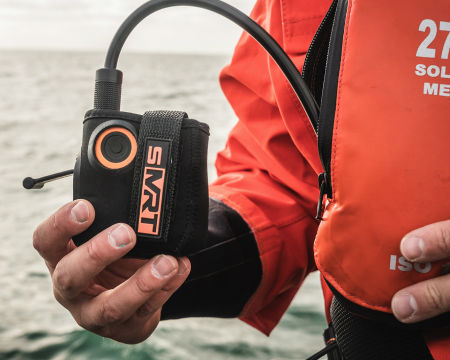How Does a Personal Locator Beacon Work?.
All distress beacons (PLBs, MSLDs, ELTs, EPIRBs, SARTs) send signals on specific and dedicated frequencies/technologies that operate worldwide. Some require bespoke receiving equipment to transmit messages to, while others work with already established worldwide radio and electronic monitoring equipment. Some of the different frequencies/technologies these beacons work on are as follows:
- 406MHz – These PLBs can be used in both marine and land environments and their signals are received by the COSPAS SARSAT satellites, the international satellite system for search and rescue. 406MHz PLBs are normally equipped with a Global Position System (GPS) receiver, the digital message transmitted by the beacon can contain the GPS-generated position of the beacon. Once the signal has been picked up by satellites, emergency services can dispatch to the exact location quickly.
- 121.5MHz - (International Air Distress [IAD]). Only used in marine environments these PLB signals are received by dedicated and bespoke receiver units fitted to aircraft, vessels and the like. These receiver units display a homing signal from 121.5MHz and which allows a bearing to be tracked. PLBs using 121.5MHz can be manually activated, or automatically activated whether that be from contact with water or inflation of a lifejacket.
Its works in the following way:
- A distress signal is transmitted from a PLB/EPIRB/ELT.
- The signal is received by the COSPAS SARSAT satellites.
- The satellites send the signal to the nearest receiving stations on earth known as Local User Terminals (LUTs).
- A Local User Terminal forwards the message to a Mission Control Centre (MCC).
- When a signal is received and identified to be a distress call from a specific area, the Rescue Coordination Centre (RCC) in that area is alerted.
A 406MHz PLB can only ever be manually activated due to its operating functions and the risk of false activations.
- VHF DSC – (Very High-Frequency Digital Selective Calling). Only used in marine environments these PLBs use the marine VHF radio band to transmit DSC distress alerts and updated GPS positions regularly from the casualty in the water to VHF DSC radios within a local area. Some marine radios can output a waypoint of the GPS position embedded within distress alerts to chart plotters. Emergency alerts operate on a timing schedule and are repeated at regular intervals to update rescue teams and assist in tracking the casualty in the water. PLBs using VHF DSC can be manually activated, or automatically activated whether that be from contact with water or inflation of a lifejacket.
- AIS – (Automatic Identification System) is an automated tracking system that displays other vessels in the vicinity. It is a broadcast transponder system that operates in the VHF mobile maritime band. A PLB with AIS uses an internal GPS receiver to acquire a position within approximately one minute of activation. The device then sends AIS transmissions containing the device’s current position. AIS alerts are routinely displayed on Electronic Chart Display and Information Systems (ECDIS). Compatible chart plotters or ECDIS can use the AIS data to provide the direction and rate of drift of the casualty, as well as range and bearing information.
PLBs using AIS can be manually activated, or automatically activated whether that be from contact with water or inflation of a lifejacket.
Article First Written:
11/03/2019
- What is a Personal Locator Beacon (PLB)?
- How Does a Personal Locator Beacon Work?
- What are the different types of PLBs?
- What are Local Area Systems?
- What is ELIFE?
- What is a True Water Activating PLB?
- What is the difference between a PLB and an EPIRB?
- What Is AIS, VHF and DSC?
- What is a 406 MHz PLB?
Contact Us
Find Us
Marine Rescue Technologies Limited
Wescom Group,
Unit J1, Springfield Way,
Anlaby, HU10 6RJ


